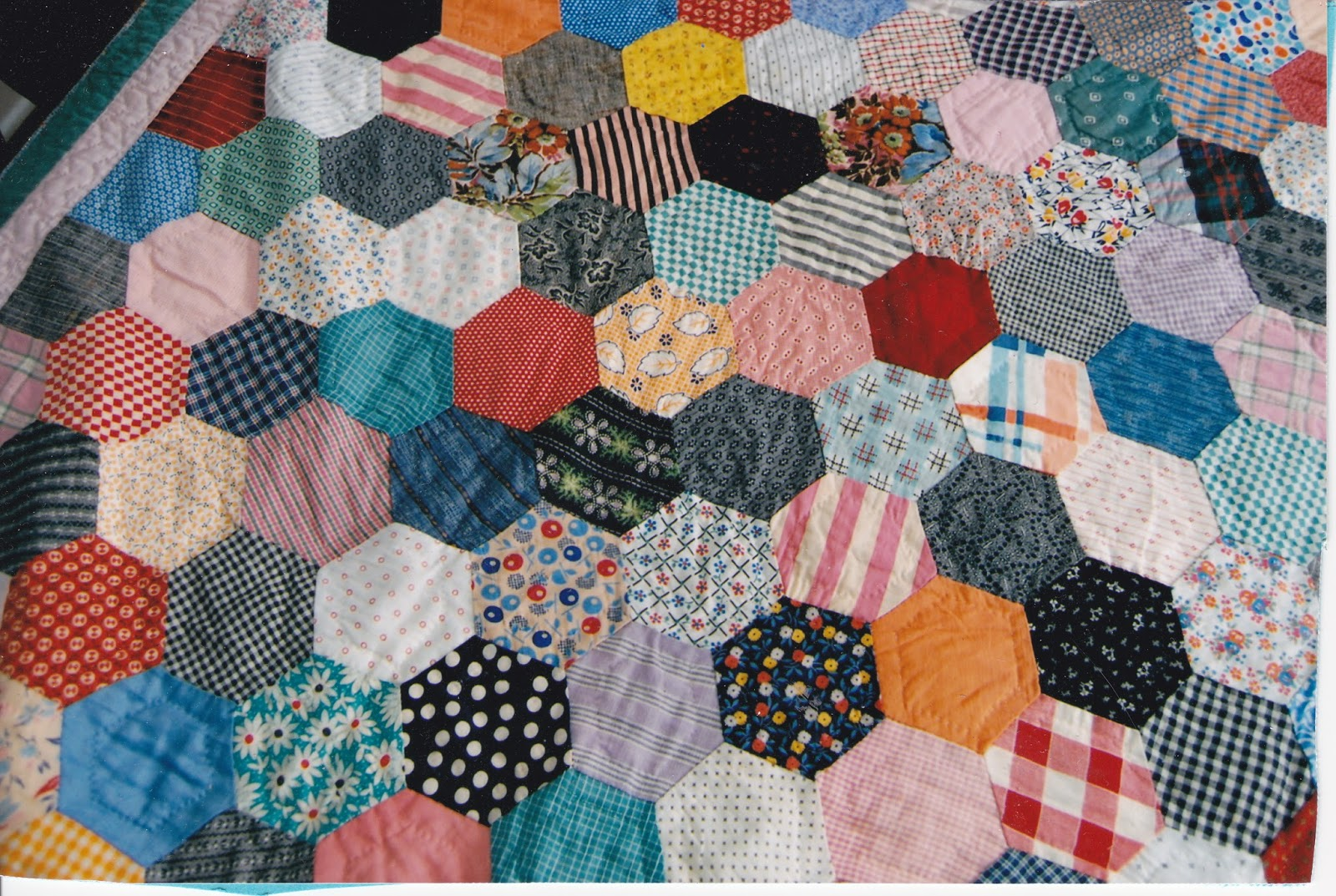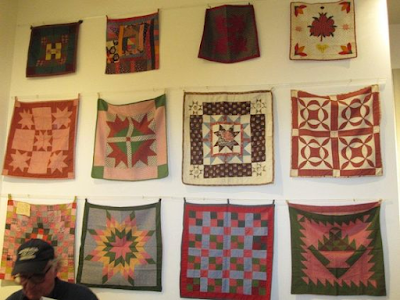Happy Monday!
Last week I organized scrap fabric as Brad and I watched the Phillies. I admit it, I'm really good at saving scraps--not so much at using them. Linda encouraged this to be a "scrap summer" and I'm finding it a lot of fun to think of projects.
Historically, I think that scrap quilts have always been a part of our quilting tradition. Many 19th century newspaper articles refer to scrap quilts in competition notations. It makes sense as part of the "waste not, want not" tradition of our foremothers.
I suspect a favorite pattern was the mosaic which used the English paper piecing method. I've seen lots of tops of these that had the paper still in them. Here's one I found on the worthpoint cite:
The pattern had all kinds of variations (including the floral version that we connotate with Grandmother's Flower Garden) but plenty of women made a scrap version like this one from Hilda Koch's family. The prints were leftovers from the home sewing and Hilda could remember different prints that were used in her dresses:
You can read about Hilda and her family here in my first blog post on this cite.
I particularly enjoy learning about what Pennsylvania Germans did with their leftover fabric. This very diverse group of people often moved to other states to farm and they are in Indiana, Ohio, etc. At our study group, Barb G. used to bring in some odds and ends that enlightened us about this ingenious group of quilters. Probably the funniest thing she brought in was a Privy Bag. It was a bag used in the outhouse that held paper (usually old catalog paper) for one to use in the facility. I found some interesting examples on Pinterest:
This photograph shows a whole exhibition at a museum in Ephrata, PA:
Here are some that came up for auction in Manheim PA, not too far from us.
Other household linens like pillowcases and shams can utilize scraps and leftover blocks. This is a Pennsylvania German pillowcase:
Let's see where this topic of scraps takes us to this week.
Wishing you a safe and happy day!






In the next-to-last photo, upper left is a pocket, usually worn under a dress or skirt and accessed through a slit in the skirt, but could also be worn outside. Though it may have been a convenient place to put "necessary" supplies, that was not it's primary purpose.
ReplyDeleteThe top, darker, hexi quilt looks similar to the one that I have in the works. I'm using 2 blocks each of each fabric I have in the 1800s reprints. Interesting, bags for the paper used for wiping bottoms.
ReplyDelete